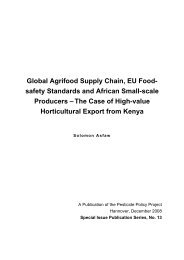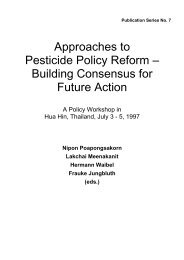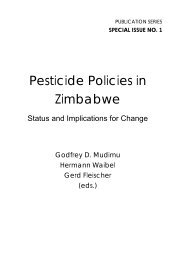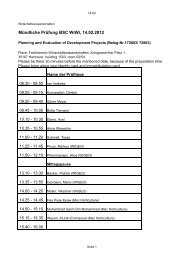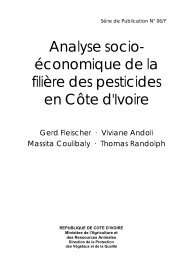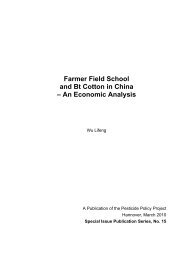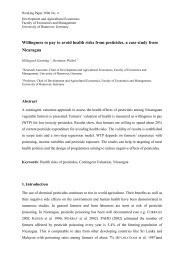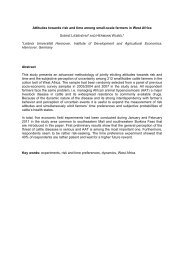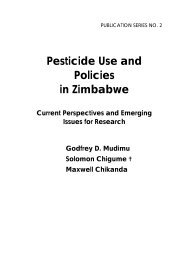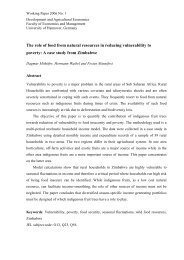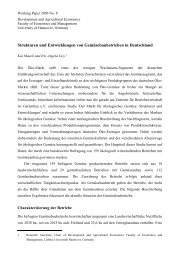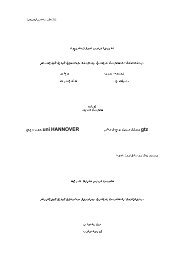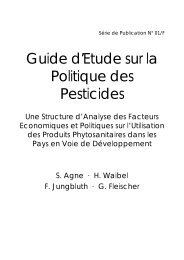PPP Special 08 - Institut für Entwicklungs- und Agrarökonomik
PPP Special 08 - Institut für Entwicklungs- und Agrarökonomik
PPP Special 08 - Institut für Entwicklungs- und Agrarökonomik
Create successful ePaper yourself
Turn your PDF publications into a flip-book with our unique Google optimized e-Paper software.
1 Introduction<br />
1.1 Backgro<strong>und</strong><br />
Cotton is one of the most important commercial crops in India<br />
contributing to over 30 per cent of foreign exchange earnings of the<br />
country. India accounts for approximately 21 per cent of the world cotton<br />
area but the average productivity of cotton is markedly low at about 293<br />
kg lint cotton/ha compared to 600 kg/ha world average per year<br />
(Sen, 2003). The low productivity of cotton is caused by some serious<br />
constraints. Lack of irrigation, limited supplies of quality seeds, poor<br />
management practices, high costs of cultivation (particularly of plant<br />
protection measures) and serious pest outbreaks have been the major<br />
limiting factors in the past (Mohanty et al., 2002). Figure 1 illustrates the<br />
big gap between size of cotton area and productivity of cotton in India<br />
when compared to other cotton producing countries like Turkey or<br />
China.<br />
Figure 1.1: International comparison of yield and area <strong>und</strong>er<br />
cotton<br />
Yield [kg/ha]<br />
1200<br />
1000<br />
800<br />
600<br />
400<br />
200<br />
0<br />
Yield<br />
Area<br />
China USA India Pakistan Egypt Turkey<br />
10<br />
9<br />
8<br />
7<br />
6<br />
5<br />
4<br />
3<br />
2<br />
1<br />
0<br />
Area [m ha]<br />
Source: adopted from Choudhary, 2001<br />
In 2002, the government of India approved the commercial use of Bt<br />
cotton despite concerns and discussions regarding possible



